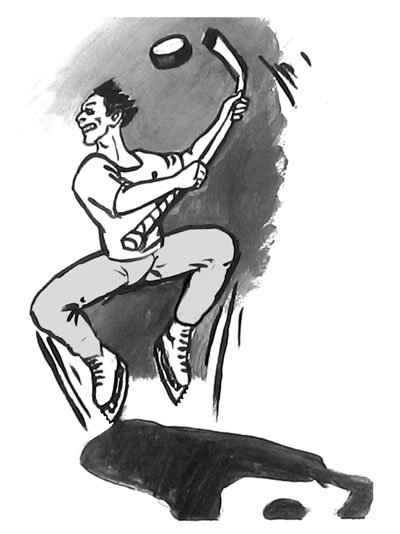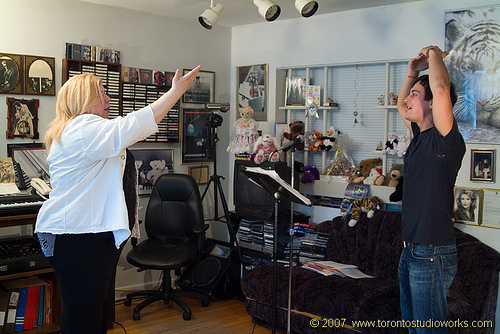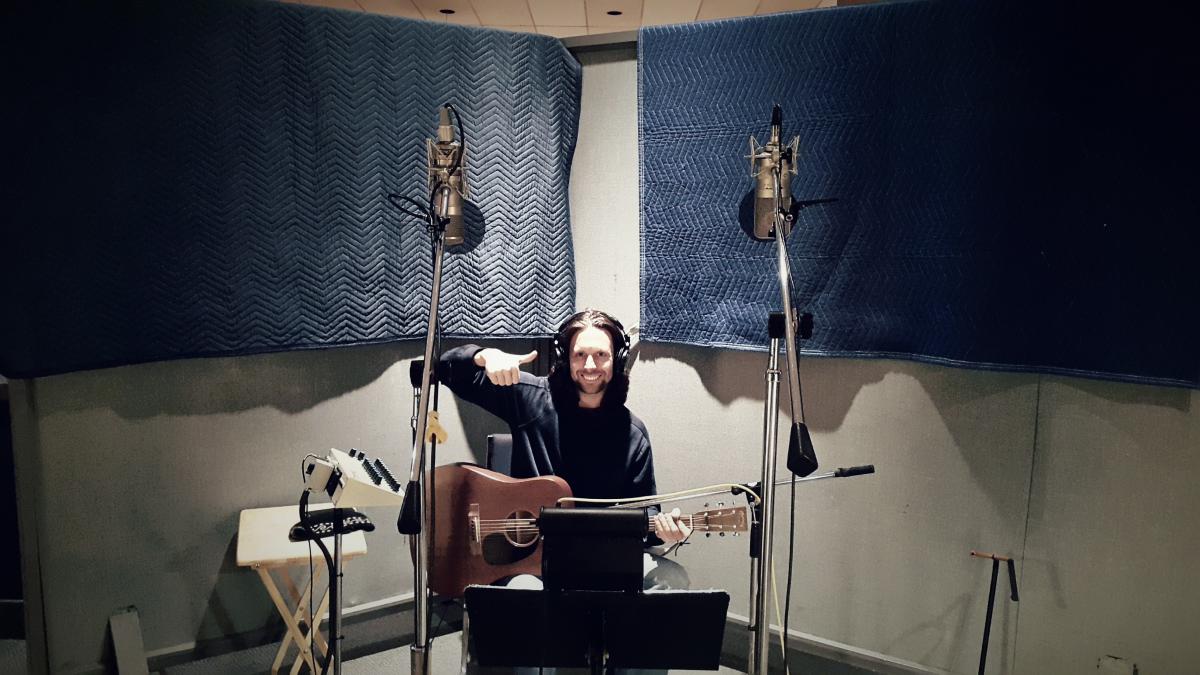The Technical Elements of Vocal Style
The Technical Elements of Vocal Style
Written by Diana Yampolsky - (written in 2001)
 In
this article, I would like to talk about an interesting observation that
I have made over my 26 years as a vocal coach; not too many people
realize that there are several aspects that have to be addressed with
regards to singing in general. First of all, when we talk about singing
we are talking about two separate, but very much related elements:
physical sound and emotional style. Physical sound is what is achieved
by proper utilization of the technical aspects of singing, i.e.
breathing (support), structure, placement and projection. Emotional
style is essentially how the singer relates to the song and anticipates
and complements the style of music, i.e. rock, alternative, country, R
& B, dance etc. A common view is that while the technical aspects of
singing can be learned through instruction and repetition, style is
only developed naturally over time. There is definitely some truth to
this statement; some people just naturally have it within them. As a
Vocal Coach/Consultant, I strongly believe in the advantages of
instruction in the technical aspects of singing. However, I also believe
that it is a mistake to completely separate style from technique and I
believe that style can be taught in a similar way that a student can be
educated in how to stay in tune, project their voice, etc.
In
this article, I would like to talk about an interesting observation that
I have made over my 26 years as a vocal coach; not too many people
realize that there are several aspects that have to be addressed with
regards to singing in general. First of all, when we talk about singing
we are talking about two separate, but very much related elements:
physical sound and emotional style. Physical sound is what is achieved
by proper utilization of the technical aspects of singing, i.e.
breathing (support), structure, placement and projection. Emotional
style is essentially how the singer relates to the song and anticipates
and complements the style of music, i.e. rock, alternative, country, R
& B, dance etc. A common view is that while the technical aspects of
singing can be learned through instruction and repetition, style is
only developed naturally over time. There is definitely some truth to
this statement; some people just naturally have it within them. As a
Vocal Coach/Consultant, I strongly believe in the advantages of
instruction in the technical aspects of singing. However, I also believe
that it is a mistake to completely separate style from technique and I
believe that style can be taught in a similar way that a student can be
educated in how to stay in tune, project their voice, etc.
As an analogy, you can find quite a few parallels between singing and figure skating. If you are familiar with figure skating you will know that the skaters are always judged by two criteria: Technical Merit and Artistic Merit. Again, in this instance, it appears that those components are separate due to the fact that they are judged separately (however, in relation with each other). As for singing, upon closer examination, you will realize that the two are very much intertwined. Afterall, a figure skater that is falling on their rear end is most definitely not going to get high technical marks; therefore, the marks for artistic impression will not matter. Similarly, a figure skater that can land all their jumps perfectly, but skates to the music in a robotic fashion, is not going to win any medals either.
As with figure skating, the technical component of singing is the platform on which the artistic expression stands. As mentioned earlier, the main technical components of singing are: support, structure, placement and projection.
- Abdominal support is responsible for the height of the sound.
- Upper diaphragm support is responsible for the width (body) of the sound.
- Structure - is the structure of the syllables which should be stackable (one on top of each other) and placed on the central line of the body.
- Placement is the domain of the four main vocal chambers, which ultimately are the same as your sinus cavities.
- An "aimed" projection is the natural outcome of the previous three componants. (I talk in more detail about these technical components of singing in my book, Vocal Science - Flight to the Universe.)

Once you've achieved mastery of these four components, you have achieved technical control of the physical sound. The next step is to 'dress it up' so that it is original, emotional, exciting and affecting. This is akin to a figure skater whose costume and movements reflect the music that is accompanying the performance. With regards to singing, the physical sound produced must correspond with the style of music and the musical instruments used in its production. Recently, I saw a popular pop singer deliver what was clearly an R & B song with a classical sounding voice. It didn't sound very good because the sound of the voice was so alien to the style of music being played by the band. She actually had a strong sounding voice and, thus, would have received high marks for technical merit if there had been official judges; but also definitely a failing grade for her artistic interpretation. In this instance, the TOTAL PERFORMANCE was not achieved.
I do believe that style can be taught. In fact, many people approach me to coach them specifically because they want to sing a particular style of music. One of my recently signed clients, a dance/R&B singer, had a recording session booked and asked me to come along for assistance. When I arrived at the studio, the session was already underway and I quickly realized that the song they were recording was not one that we had previously worked on. Moreover, this song was very demanding because it required a combination of three distinct styles: pop, dance and R&B. The song required that the singer sometimes had to change between styles as frequently as every second line. The producers were high caliber and definitely knew what they wanted, but were having trouble transferring their instructions on how to do it to the singer. She also knew what they wanted but did not exactly know how to achieve it. This is where I stepped in and was able to provide assistance. By quickly instructing my student how she could attain the requested stylistic elements, the song was successfully recorded in much less time than even the producers anticipated.

The majority of students that come to my school for instruction have a definite idea about the style of singer they want to be, but they don't always know how to achieve it. From the very beginning of instruction, I always teach them the obvious, such as how to stay in key and project their voice, but also work with them on the stylistic elements of the songs they are singing. This is often done by breaking the songs down to individual lines and practicing the ways in which each syllable should be sung depending on the style of music. For example, if you are singing an alternative rock song you should be attempting it in a voice that is a little more raspy and somewhat nasal and less smooth sounding and with less or no vibrato. Please note that the rasp should be achieved without straining your vocal chords and is done by correctly coordinating the use of your facial and abdominal muscles. Quite a few of my students sought coaching from me solely because they wanted to achieve this raspy type of voice without damaging their voice permanently. This is one example of how the artistic style should be based on the foundation of flawless vocal technique.
Some tips on how to approach various other styles of music are as follows:
R & B: sing with a very wide smile. This will open up your resonator (natural amplifier within your facial muscles) and place your syllables as tightly as possible using your cheekbone muscles. This will prevent any vibrato in the voice.
Pop: the pop style is essentially the same as R & B but with a much lighter application. More laid back and in a sort of "boyish" or "girlish" style.
Classical: is definitely a more vertical application - not rounded like in R & B or Pop. The use of proper vibrato is an essential component of this style.
Country: is a mix of classical, pop and R & B. You could often hear a slight crying feel and a minor nasal application. Quite a few country singers use a light, breathy sound, which is also often used in pop singing.
Gospel: uses a classical application, but lately gospel is being associated with the R & B style. I guess it is really a combination of the two.
Hard Rock: uses a heavy-duty application of the classical style. Often using lots of vibrato will help to distinguish the singer from the loud guitars and drums and enable him to "cut through".
In all of the above cases, the singer needs to have a strong technical foundation to their singing. Style is achieved by varying and applying the technical elements in different ways.

You can find out more about how to become a better and more professional singer, by reading some of the other articles available in the Publications Sesion of our site.










